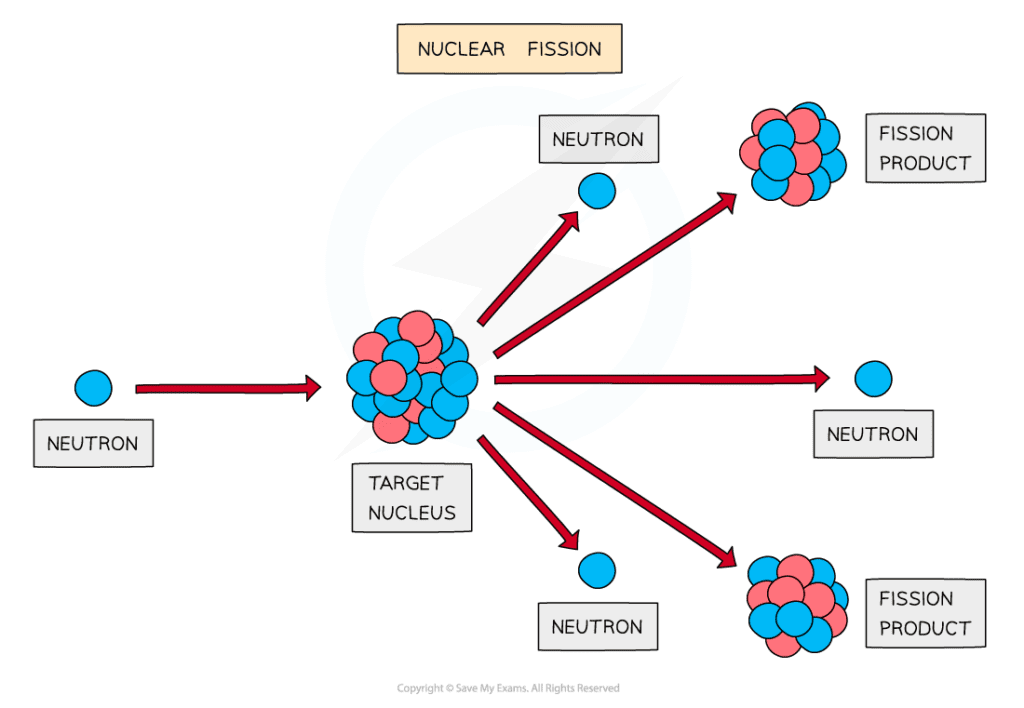Nuclear Fission Diagrams (AQA GCSE Physics): Revision Note
Exam code: 8463
Nuclear Fission Diagrams
The processes involved in nuclear fission can be shown in different ways as diagrams
These diagrams show how the reaction happens in a way that is easy to understand

A neutron is fired into the target nucleus, causing it to split
The diagram above is useful because it shows clearly the different parts of the fission reaction
Worked Example
The diagram shows the nuclear fission process for an atom of uranium-235.

Complete the diagram to show how the fission process starts a chain reaction.
Answer:

Step 1: Draw the neutrons to show that they hit other U-235 nuclei
It is the neutrons hitting the uranium-235 nuclei which causes the fission reactions
The daughter nuclei do not need to be shown, only the neutrons and uranium-235 nuclei
Step 2: Draw the splitting of the U-235 nuclei to show they produce two or more neutrons
The number of neutrons increases with each fission reaction
Each reaction requires one neutron but releases two
More reactions happen as the number of neutrons increases
Examiner Tips and Tricks
You need to be able to draw and interpret different diagrams of nuclear fission and chain reactions. Generally, things move to the right as time goes on in these diagrams, but it is important to read all the information carefully on questions like this. If you have to draw a diagram in an exam remember that the clarity of the information is important, not how pretty it looks!

Unlock more, it's free!
Did this page help you?